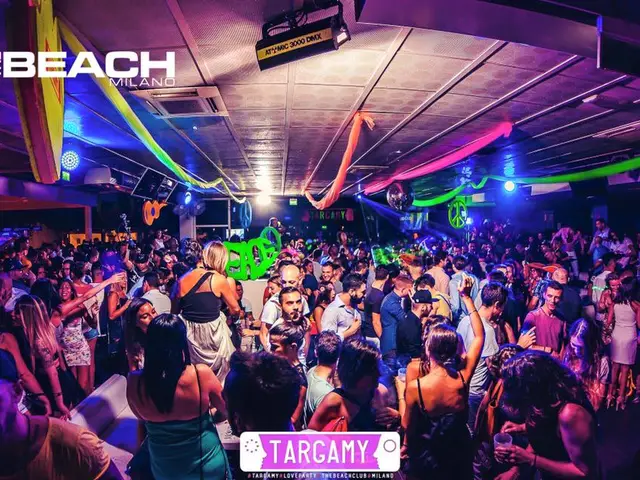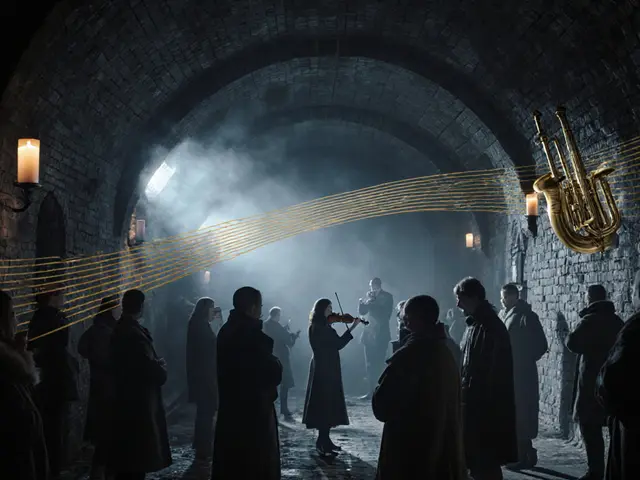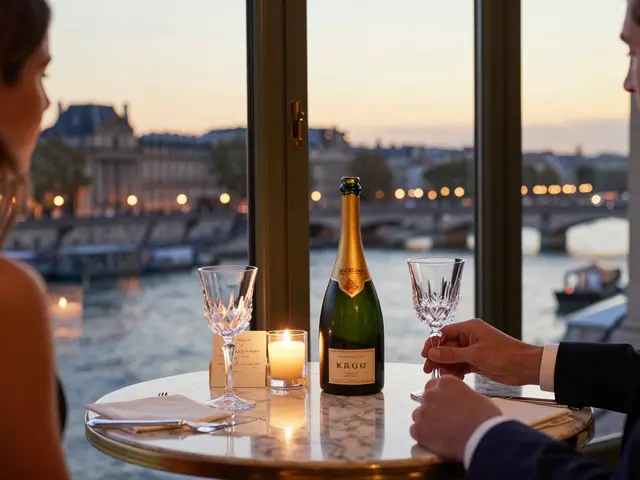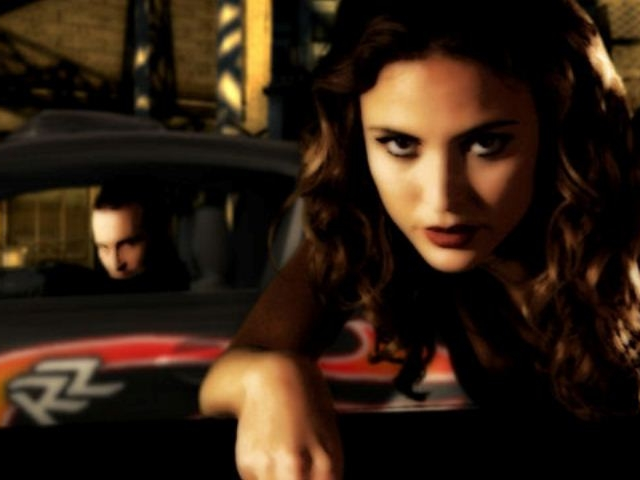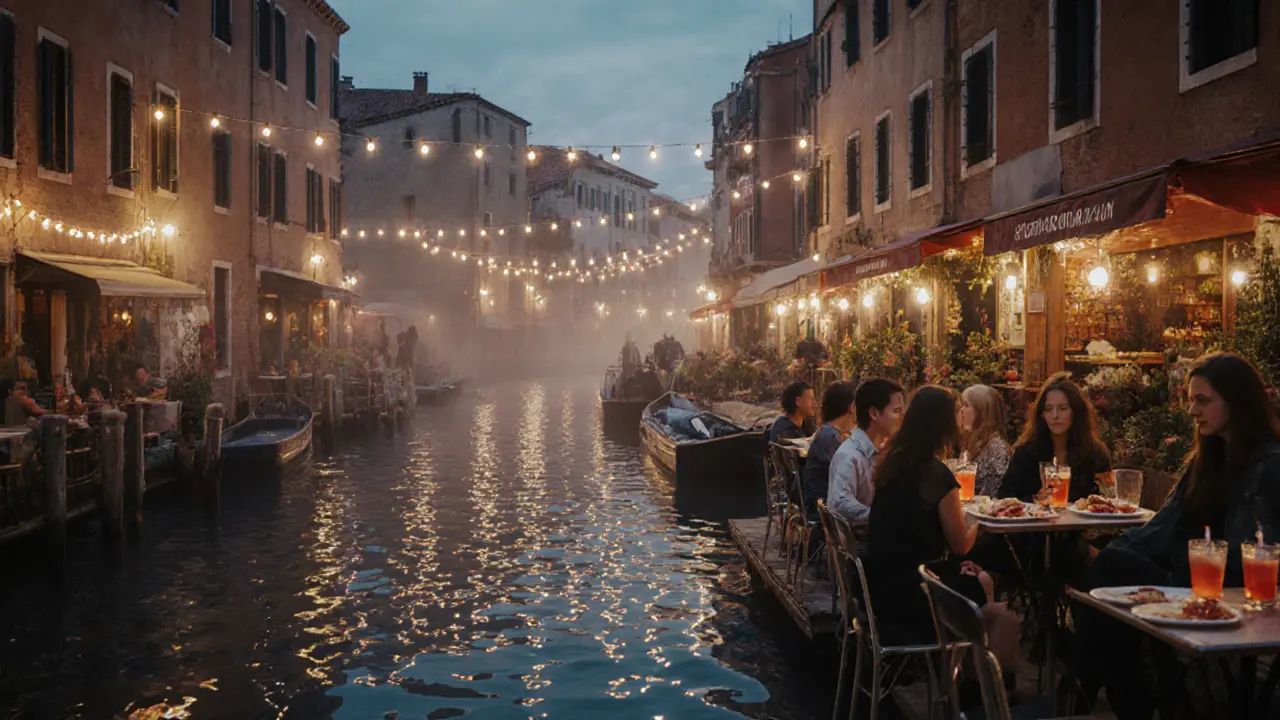
When the sun sets over Milan, the city doesn’t sleep-it switches gears. Forget the daytime rush of fashion shows and designer boutiques. At night, Milan becomes something else: electric, stylish, and surprisingly wild. You won’t find just clubs here. You’ll find rooftop lounges with skyline views, hidden wine bars tucked behind unmarked doors, live jazz in century-old palazzos, and open-air parties along the canals. This isn’t just partying. It’s a cultural ritual.
Start in Navigli: The Canals That Come Alive
Every Friday and Saturday night, the Navigli district transforms. The canals, usually calm and lined with vintage shops, turn into open-air lounges. Locals spill out of trattorias with aperitivo in hand, and music drifts from floating bars. The best spot? Bar Luce on the Naviglio Grande. It’s not flashy, but it’s where Milanese come to unwind. Order a Spritz, grab a plate of mortadella and cheese, and sit by the water. The crowd here is a mix of artists, students, and older couples who’ve been doing this for decades.
Walk east toward the intersection of Via Tortona and Via Varesina. That’s where the real party starts. Pop into La Serra, a converted greenhouse with string lights and mismatched sofas. It’s not a club-it’s a vibe. DJs spin indie rock and soul, and the drinks are cheap. No cover. No dress code. Just good energy.
Brera: Where Elegance Meets Edge
If Navigli is the soul of Milan’s night, Brera is its heart. Narrow cobblestone streets, Renaissance buildings, and art galleries by day turn into candlelit wine bars by night. Bar Basso is legendary-not because it’s loud, but because it invented the Negroni Sbagliato. The bartender doesn’t smile much. He doesn’t need to. You’ll know you’re in the right place when you see the queue snaking out the door. Arrive before 9 p.m. if you want a seat.
For something quieter, try Il Salumiere. It’s a tiny wine bar with 80 bottles on the wall, all from small Italian producers. The owner pours you a glass, tells you where it’s from, and lets you decide if you want another. No menus. No pressure. Just honest wine and quiet conversation.
Clubs: From Underground to Glamour
Milan’s club scene isn’t one-size-fits-all. If you want glitter and bass, head to Alcatraz in the Porta Venezia area. It’s been around since the 90s and still draws international DJs. The dance floor is packed by midnight, and the sound system is built for techno purists. Expect a strict door policy-no sneakers, no hoodies. Dress sharp or get turned away.
For something more experimental, go to Teatro degli Arcimboldi. It’s not a club. It’s a theater that turns into a warehouse party on weekends. Artists from Berlin and Tokyo play here. The crowd is younger, smarter, and less concerned with looking good. The music shifts from ambient to hardcore techno without warning. Bring earplugs. You’ll need them.
And then there’s La Bodega, a hidden gem under a train bridge. No website. No Instagram. You find it by word of mouth. The door is a steel gate. Inside, it’s dim, sweaty, and loud. The playlist is all 80s Italian disco and rare funk. You’ll leave with your shoes stuck to the floor-and you’ll come back next week.
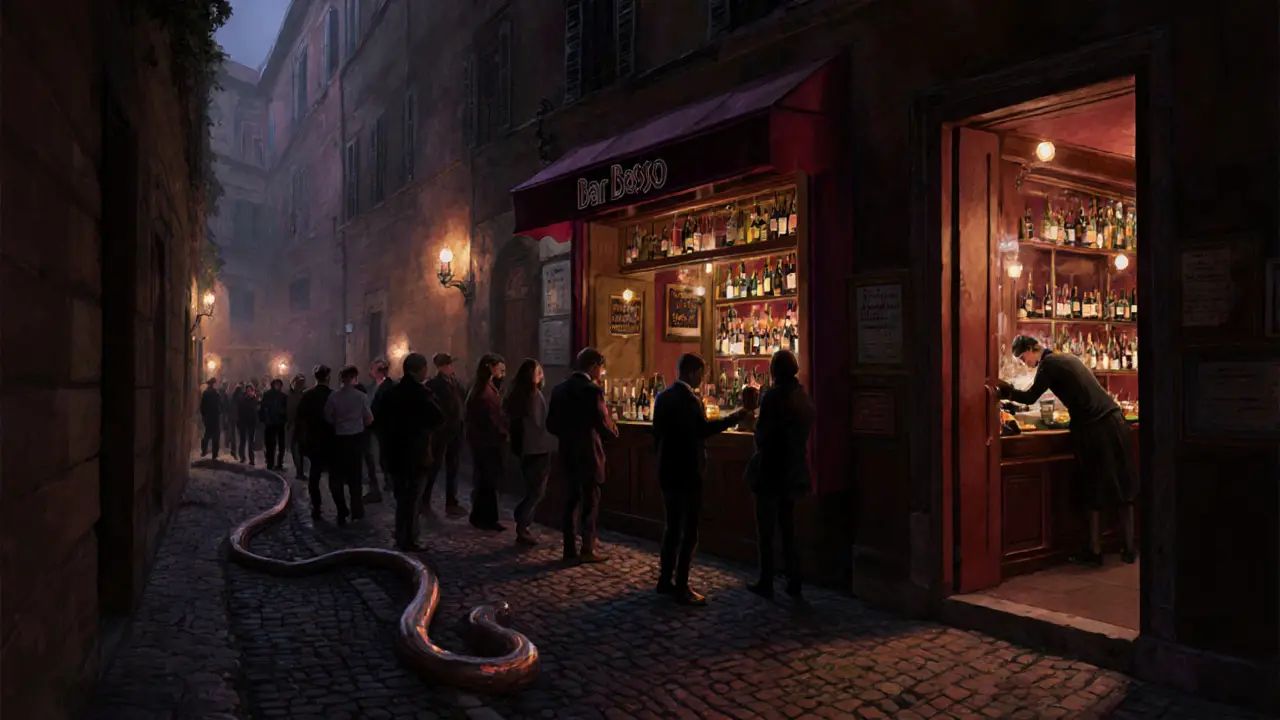
Aperitivo: The Ritual That Defines Milan Nights
Don’t skip aperitivo. It’s not a drink. It’s a tradition. Between 6 p.m. and 9 p.m., bars across Milan offer free snacks with your cocktail. Think bruschetta, stuffed olives, mini paninis, even hot pasta. The best aperitivo spots? Bar Basso (again), La Cucina del Ghiaccio in the Zona Tortona, and Il Baretto near the Duomo.
At La Cucina del Ghiaccio, they serve a different buffet every night. Monday might be Sicilian arancini. Thursday could be truffle crostini. The drinks are cheap-€8 for a Prosecco or Aperol Spritz-and the food is better than most restaurants. Locals come here after work. Tourists come here because they heard it’s ‘the place.’ They’re both right.
Live Music and Jazz: The Soundtrack of the Night
Milan doesn’t just have clubs. It has jazz. And it’s not touristy jazz. It’s the kind played in smoky rooms with leather booths and old vinyl on the walls. Jazz Club Milano on Via Solferino is the real deal. No neon signs. No cover charge before 10 p.m. The band plays from 9:30 p.m. until 2 a.m. You’ll hear local legends who’ve played with Miles Davis and younger players who’ve studied in New York. Bring cash. No cards.
For something more modern, try Blue Note Milano. It’s a branch of the New York icon, but with a Milan twist. The acoustics are perfect. The food is gourmet. The drinks are expensive-but worth it if you want to hear a world-class pianist in an intimate setting.
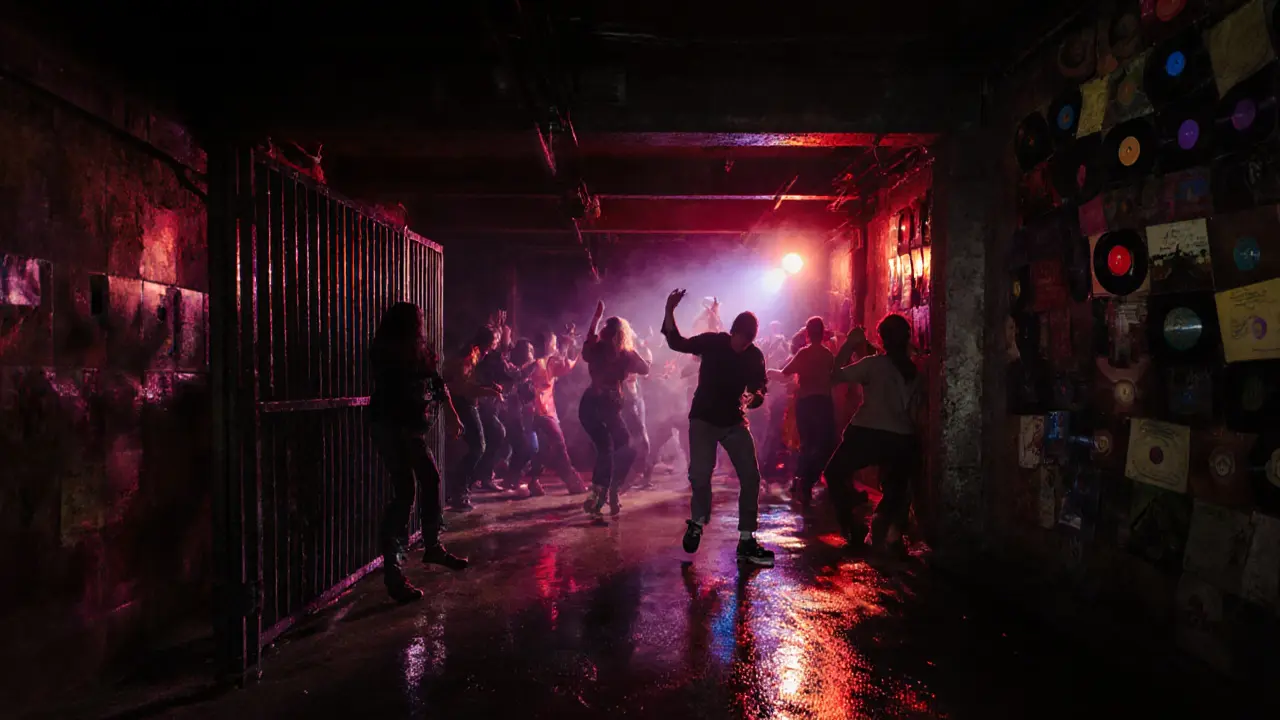
What Not to Do
Don’t go to the Duomo at night looking for a party. It’s beautiful, but it’s empty after 10 p.m. Don’t follow Instagram influencers to ‘secret spots’ that don’t exist. Many ‘hidden bars’ are just overpriced gimmicks. Don’t assume everyone speaks English. Learn three words: grazie, per favore, and un aperitivo, per favore.
And don’t try to rush it. Milan nights don’t start at midnight. They start at 9 p.m. with aperitivo. They peak at 1 a.m. with dancing. They end at 4 a.m. with a late-night espresso at a 24-hour bar like Bar Campari on Via Torino. That’s the rhythm. Match it, and you’ll feel like a local.
When to Go
Summer (June-August) is the peak. The canals are packed. Rooftops are open. But it’s hot, and prices rise. Spring (April-May) and fall (September-October) are better. The weather’s perfect. Crowds are thinner. You’ll get better service. Winter? December is magical. The Christmas markets stay open late, and bars have mulled wine and live acoustic sets. January and February are quiet-perfect if you want to explore without the noise.
Final Tip: Dress Like You Belong
Milan doesn’t care if you’re rich. It cares if you care. You don’t need designer labels. But you do need to look put together. No shorts. No flip-flops. No baseball caps. Even in the most casual spots, people dress with intention. A clean pair of jeans, a button-down, and boots will get you everywhere. Women wear simple dresses or tailored pants. It’s not about being fancy. It’s about being respectful.
When you leave Milan at 5 a.m., tired and smiling, you won’t remember the name of the DJ or the exact cocktail you drank. You’ll remember the way the lights reflected off the canal, the laughter from the next table, the quiet nod from the bartender who knew you were new. That’s Milan’s nightlife. It doesn’t shout. It whispers-and if you listen, it’ll stay with you.
Is Milan nightlife safe at night?
Yes, Milan’s nightlife areas are generally safe, especially in well-lit, popular districts like Navigli, Brera, and Porta Venezia. Stick to busy streets, avoid isolated alleys after midnight, and keep an eye on your belongings. Pickpocketing can happen in crowded bars, so use a crossbody bag and don’t leave drinks unattended. Police patrols are common near major clubs, and most venues have security.
What’s the best night to go out in Milan?
Fridays and Saturdays are the busiest, with the most events and crowds. But if you want a more authentic, less touristy experience, try Thursdays. Many locals go out midweek, and the energy is more relaxed. Clubs like La Bodega and Alcatraz often have themed nights on Thursdays. Sunday nights are surprisingly lively too-many people unwind after weekend parties with live jazz or quiet wine bars.
Do I need to book ahead for Milan clubs?
For big-name clubs like Alcatraz or Blue Note Milano, yes-especially on weekends. Book online a few days in advance. For smaller spots like La Serra, Bar Luce, or La Bodega, no booking is needed. You can just show up. Some places have guest lists for special events, but most are walk-in only. If you’re unsure, call ahead or check their Instagram stories-they usually post updates.
How much should I budget for a night out in Milan?
You can have a great night for €30-€50. Aperitivo (drink + food) costs €8-€12. A cocktail at a trendy bar is €12-€15. Club entry is usually free before midnight, €10-€15 after. Drinks inside clubs range from €10-€18. If you’re splurging on dinner or a live jazz show, add €20-€40. Skip the tourist traps near the Duomo-they overcharge. Stick to local favorites.
Are there any dress codes in Milan clubs?
Yes, but they vary. High-end clubs like Alcatraz and Blue Note Milano enforce a smart-casual dress code: no sneakers, no shorts, no tank tops. Jeans and a nice shirt or dress work. Underground spots like La Bodega or Teatro degli Arcimboldi are more relaxed-just avoid beachwear. When in doubt, dress slightly better than you think you need to. Milanese people notice. It’s not about being rich-it’s about being intentional.
Can I find English-speaking staff in Milan nightlife spots?
In tourist-heavy areas like Navigli and Brera, yes-most bartenders and club staff speak basic to fluent English. In smaller, local spots like La Bodega or jazz bars, staff may speak little to no English. But that’s part of the charm. Learn a few Italian phrases. A simple “Grazie” or “Un altro, per favore?” goes a long way. Most people appreciate the effort.
What’s the latest I can stay out in Milan?
Most clubs close between 3 a.m. and 4 a.m. Bars stay open later-some until 5 a.m. or even 6 a.m. in summer. 24-hour espresso bars like Bar Campari or Caffè Cova are open all night for coffee and snacks. Public transport stops running around 1 a.m., so plan ahead. Taxis and Uber are available but expensive after midnight. Consider staying near your night-out area if you’re planning a late night.

